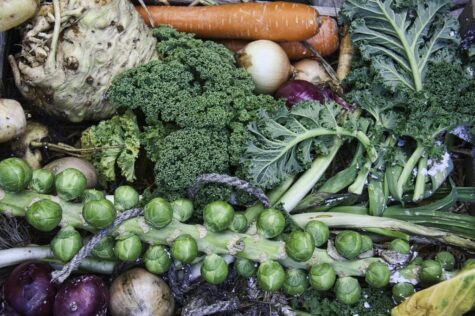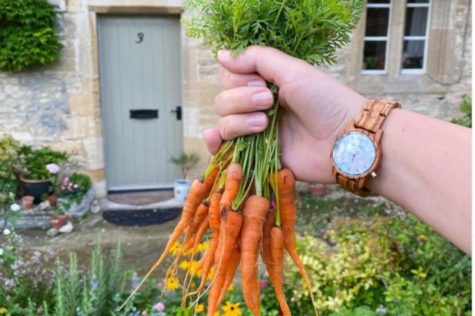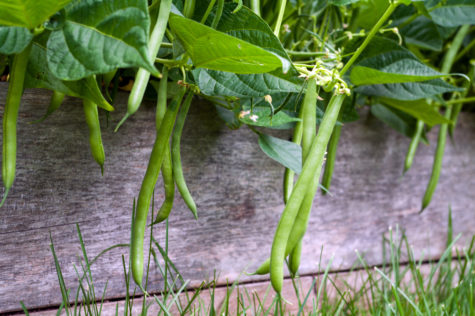Strawberries are the perfect summer treat, whether you dip them in cream, drop them into lemonade or reduce them down for jam. Learning how to grow strawberries at home is incredibly rewarding, and will save you heaps of money in comparison to buying them from a supermarket. They’ll probably taste better too!
So, whether you’re cultivating a perfect cottage garden or British-themed backyard – or maybe you just want some fresh fruit for your Pimm’s (in which case, check out our guide for growing cucumbers too) – let’s take a look at how to grow strawberries.
Growing Strawberries: Where to Begin?
There are two types of strawberries; summer-fruiting strawberries (which grow large fruit for 2-3 weeks from early to mid summer), and perpetual strawberries, or ‘everbearers’ that will produce clusters of smaller fruit from the beginning of summer to the beginning of autumn. The best type for you will depend on space, and what you’re planning to do with your strawberries.
Sow in: March, April
Harvest in: June, July, August, September, October
You can also plant strawberries in October for the following year.
Planting strawberries

Rather than growing strawberries from seed, it’s much easier to buy young plants in pots, or as runners with bare roots. Runners can look a bit uninspiring (like scraps of roots without many leaves), but I promise, they’ll grow! Buying from a reputable supplier, you can be sure of the variety of strawberry plant you’re getting, and that your plants are disease-free.
Strawberries will flourish if you plant them in the ground, especially if you take the time to prepare the soil. Choose a sunny, sheltered and fertile location, avoiding areas that might be struck by a late frost – and don’t plant strawberries in soil directly after potatoes, tomatoes or chrysanthemums because of the diseases that can remain in the soil. Mix a couple of buckets of garden compost or well-rotted manure into the soil, and add a general purpose fertiliser to get started.
Strawberries are traditionally planted in rows, with about 35cm between each plant, and 75cm of space between rows. Strawberry root balls should be about 10cm across (you can trim them a little if they’re much larger), so dig holes to accommodate them comfortably.
As you refill the soil, take care not to cover the crown of the plant (the section where the stems cluster together before separating – it looks a bit like a crown). The crown should be gently resting on the surface, with the roots completely covered.
How to grow strawberries

Keep your plants well-watered as they become established, although try not to let the crowns get too wet (waterlogged crowns will harbour disease and mould). Keep applying fertiliser every week to two weeks during the growing season to help your strawberry plants form healthy delicious fruits.
Depending on the wildlife in your local area, you might find it useful to cover your strawberry plants with a fine mesh, to keep birds from snatching the berries as they form. If squirrels are a problem, a metal mesh is better than a plastic one.
If you’re growing cold-weather everbearers (early spring or in October), pinch off the first bloom of flowers to help your plants grow stronger before they produce fruit. You don’t need to do this with summer varieties unless the plant is looking a bit feeble.
Most gardeners like to cover the ground with a straw mulch, or soft fibre mat, when they notice the first fruits beginning to ripen – it provides a bit of a gentler landing if your fruits drop early (and will also limit weeds and slugs)!
Growing strawberries in pots

If you know your garden soil isn’t particularly good quality for growing crops, you can cultivate strawberries in lots of other ways, for example:
- Pots/containers
- Strawberry planters (with side pockets)
- Hanging baskets (along with other edible plants)
- Window boxes
- Folding/pop-up planters
- Grow-bags
Container gardening is great for strawberries, as you can move them into more sheltered spots in bad weather, but return them to full-sun to help them ripen. Raised planting gives you a bit more of a defence against pests, too!
Thanks to staying relatively contained, strawberry plants are convenient for balconies, patios and small gardens. They’re also perfectly happy being grown indoors, as long as they have plenty of sunshine – so they’re an ideal plant if you’re looking for indoor garden ideas.
The only thing to keep in mind is that containers and pots dry out much quicker than flower beds, so remember to keep your strawberry plants well-watered. Mixing in a high potash fertiliser during the growing season is a good idea too.
Harvesting strawberries

Another way to repurpose those old pallets!
Your strawberries are ready when they’re a bright red colour all over. It’s generally recommended that harvesting them at the warmest part of the day results in the best flavour. Remember that strawberries don’t keep well, so, unless you’re going to preserve or process them, pick your strawberries as close as possible to when you intend to eat them!
At the end of the cropping season, remove the fibre mat/mulch/plastic from around your plants, and take off the netting – both things will help to limit pests. You should also trim off old leaves from summer-fruiting plants so new leaves can form.
Strawberry plants typically produce fruit for four years, after which you’ll need to replace them. When you buy new plants, it’s best practice to grow them in a new location with fresh soil to keep nutrients balanced and minimise disease.
Common Problems when Growing Strawberries
Strawberry plants are a tender treat for several kinds of organisms, which means that learning how to grow strawberries will involve some level of pest control practice. Here are the most likely threats to your strawberry plants:
- Strawberries don’t take well to frost, and a late cold snap can damage and deform your plants. Keep an eye on the weather at the beginning of the season, and gently cover your strawberry patch with horticultural fleece if a frost is forecast.
- Like chilli peppers, strawberries can be susceptible to grey mould – a fuzzy fungus that will develop if your plants are too moist. If you notice any spores, it’s best to cut the affected area off completely, clear up any fallen leaves and try to make more room for airflow around your plants.
- Powdery mildew is another fungal challenge you’ll face when tackling how to grow strawberries. It looks just like a dusty pale powder on your plants’ leaves, and can usually be remedied with keeping the soil moist and moving your strawberries to a slightly cooler location for a bit.
- Vine weevils are pesky critters that leave tell-tale notches chomped out of your plant leaves. Oh, and the larvae at the bottom of the plant will be feasting on the roots of your plants, in a double-pronged attack. The beetles are small, round and dark coloured, while the larvae are mostly white with brown heads. Employing biological control is the best way to tackle these common garden pests.
Now you know the basics of how to grow strawberries in your garden, don’t forget to check out some of our other guides and ideas for making the most out of your outdoor space this summer. Why not spruce up your BBQ area, or indulge in a cosy swinging chair? Tell us what you think!

Save this pin for later







